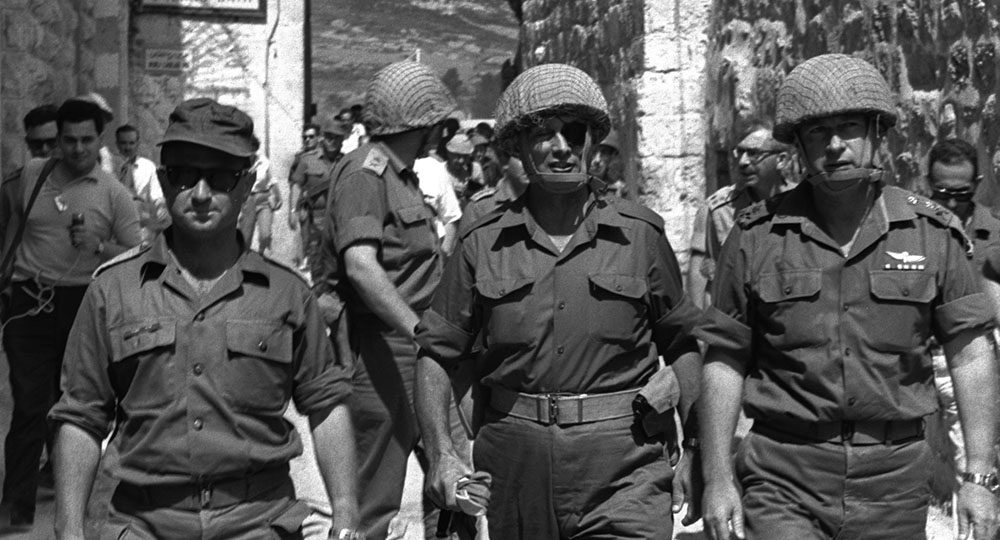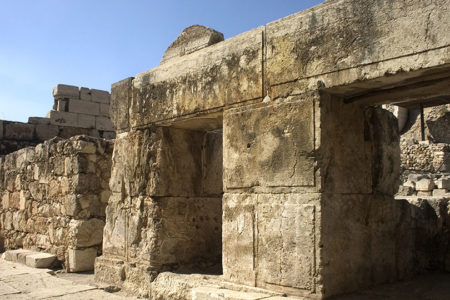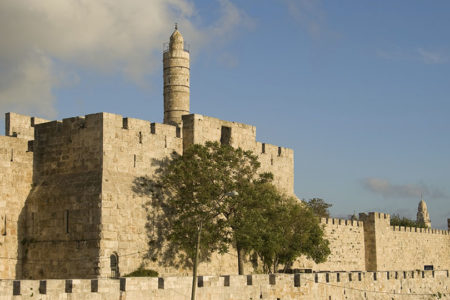Why the Waqf Rules
When Israeli statesman Ariel Sharon visited the Temple Mount in Jerusalem in 2000, he was surrounded by 1,000 Israeli police. His visit, along with the announcement that the complex would remain under perpetual Israeli control, was followed by Arab rioting, stone-throwing, and killings. Thus began a five-year intifada (Arabic for “rebellion”) against Israel.
Sharon’s visit was perceived as a direct challenge to the Waqf, the Islamic trust administering the Temple Mount. The Waqf is responsible for the site, deciding who will be allowed on it and how they will behave. The two principal structures on the Temple Mount today are the Islamic Dome of the Rock and the al-Aqsa mosque.
Why, you might ask yourself, are the Arabs in charge of the Temple Mount? After all, didn’t Israel win control of Jerusalem, including that highly prized 35-acre site, during the 1967 Six-Day War? Israel did indeed. But in a magnanimous gesture for peace, it continued to let the Waqf rule, subject to Israeli sovereignty. Israel has no desire to manage Muslim holy sites.
From 1948 to 1967, Jerusalem was divided. Jordan controlled the Old City, including the Temple Mount, and barred Jewish people from their holiest of places: the Western Wall (Kotel in Hebrew). The Kotel is a remnant of the retaining wall (below the Mount) that surrounded the second Temple, which was on the Mount.
In June 1967 Israel found itself fighting a two-front war (Syria in the north, Egypt in the south). The tiny Jewish nation’s very existence was at stake. Jordan was not involved, and Israel had no desire to open a third front. So Israel appealed to Jordan to refrain from attacking and keep the status quo.
However, Egypt tricked Jordan into entering the war, and Jordan struck Israel. Within two days of the attack, Israeli Gen. Mordechai (Motta) Gur reported to his company commanders, “The Temple Mount is in our hands! I repeat, the Temple Mount is in our hands!” For the first time in 19 years, Jewish people had access to worship at their holiest site.
And for the first time in 2,000 years, a Jewish state controlled an undivided Jerusalem and access to the Temple Mount. Almost immediately upon victory, Minister of Defense Moshe Dayan issued the following statement from the Western Wall: “To our Arab neighbors we extend, especially at this hour, the hand of peace. To members of the other religions, Christians and Muslims, I hereby promise faithfully that their full freedom and all their religious rights will be preserved. We did not come to Jerusalem to conquer the Holy Places of others.”
By the end of June 1967 the Israeli Knesset extended Israel’s legal and administrative jurisdiction to all of Jerusalem and expanded the city’s municipal borders. It also passed one of the most extraordinary pieces of legislation in world history: the Protection of Holy Places Law. This law grants special legal status to all the holy sites, making it a criminal offense to desecrate or violate them or to impede freedom of access to them. Under this law Israel turned over the administration of the Temple Mount to the Waqf, although it maintained military security.
According to Dr. Randall Price, a Bible scholar and long-time archaeologist, Jordan’s 1994 peace agreement with Israel gave Jordan custodianship of the Temple Mount. “However,” said Dr. Price, “Palestinians now claim this right based on their political demand that Jerusalem is to be the capital of a future Islamic, Palestinian state.” For example, Yasser Arafat, the late Palestinian Authority chairman, replaced the Jordanian grand mufti of Jerusalem with a Palestinian of his own choosing. “Since 2000,” said Price, “when Ariel Sharon allegedly violated the Muslim holy sites and launched what Palestinians call ‘the Battle for al-Aqsa,’ Israeli sovereignty has been increasingly ignored.”







